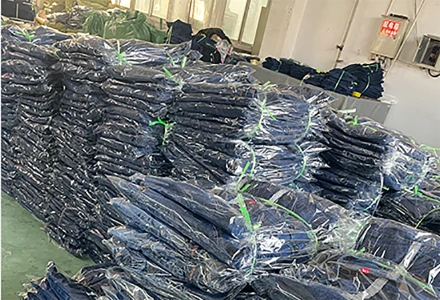- Afrikaans
- Albanian
- Arabic
- Armenian
- Basque
- Belarusian
- Bengali
- Bulgarian
- Croatian
- Czech
- Danish
- Dutch
- English
- Esperanto
- Finnish
- French
- German
- Greek
- Hebrew
- Hindi
- Indonesian
- irish
- Italian
- Japanese
- Javanese
- kazakh
- Rwandese
- Korean
- Kyrgyz
- Latin
- Latvian
- Luxembourgish
- Malay
- Myanmar
- Nepali
- Persian
- Polish
- Portuguese
- Romanian
- Russian
- Serbian
- Slovak
- Spanish
- Swedish
- Tagalog
- Tajik
- Turkish
- Ukrainian
- Uzbek
- Vietnamese
Dec . 04, 2024 08:10 Back to list
Choosing the Best Materials for Outdoor Jackets for Maximum Performance and Comfort
Understanding Outdoor Jacket Materials Choosing the Right One for Your Needs
When it comes to outdoor activities, having the right equipment can make all the difference. Among the most essential pieces of gear is the outdoor jacket. Whether you're hiking, camping, or simply enjoying a walk in the park, a good jacket protects you from the elements. However, not all jackets are created equal, and the material used plays a crucial role in performance, durability, and comfort.
Types of Materials Used in Outdoor Jackets
Outdoor jackets can be made from a variety of materials, each offering distinct advantages and disadvantages. Understanding these materials is key to making an informed choice.
1. Nylon This synthetic fabric is one of the most commonly used materials in outdoor jackets. It's lightweight, durable, and water-resistant, making it an excellent choice for those who need protection against the rain. Nylon jackets often feature a durable water repellent (DWR) coating, which helps keep moisture at bay. However, nylon can be less breathable than other materials, which might be a consideration if you're planning intense activities.
2. Polyester Similar to nylon in terms of durability and weight, polyester is another popular option for outdoor jackets. It's often chosen for its quick-drying properties, making it ideal for variable weather conditions. Polyester is also resistant to UV light, which adds an extra layer of protection during sunny excursions. As with nylon, polyester jackets may not be as breathable, so it’s essential to look for features like ventilation zippers for better airflow.
3. GORE-TEX® and Other Membranes GORE-TEX® is a well-known brand name for waterproof and breathable fabrics. Jackets made with GORE-TEX® feature a membrane that prevents water from penetrating while allowing perspiration to escape. This technology is perfect for high-activity outdoor pursuits where moisture management is crucial. Other similar materials include eVent and Polartec NeoShell, which also prioritize breathability and waterproofing.
4. Fleece Often used as an insulating layer, fleece is made from polyester and is known for its warmth, softness, and breathability. While fleece jackets are generally not waterproof, they provide excellent insulation and can be effectively layered under a waterproof shell for added warmth. Look for jackets with windproof qualities, especially if you plan on being outdoors in breezy conditions.
5. Down Insulation Down jackets are filled with the soft under feathers of ducks or geese and are renowned for their exceptional warmth-to-weight ratio. They are perfect for cold-weather activities. However, they lose insulation properties when wet, so it’s crucial to pair them with a waterproof outer layer or choose a down jacket that has been treated with a water-resistant coating.
outdoor jacket material

6. Synthetic Insulation An alternative to down, synthetic insulation uses polyester fibers to mimic the warmth of down while maintaining performance when wet. Jackets with synthetic insulation tend to dry faster and are often more affordable than down. Popular options include materials like Primaloft and ThermoBall.
Factors to Consider When Choosing a Jacket
When selecting an outdoor jacket, consider the following factors
- Intended Use Are you hiking, climbing, camping, or skiing? Different activities may require different features. For example, a climber may prioritize mobility and breathability, while a skier might need added insulation and waterproofing.
- Weather Conditions Think about the climate in which you'll be using the jacket. Will you face heavy rain, snow, or extreme cold? Understanding the expected weather can help you choose the right materials.
- Layering Options Consider whether the jacket will be worn alone or layered with other clothing. If you plan to wear it over bulky clothing, look for a cut that provides extra room.
- Budget High-performance materials like GORE-TEX® often come with a higher price tag. Determine your budget beforehand and look for qualities that will provide the best value for your money.
Conclusion
In summary, the material of an outdoor jacket significantly influences its performance. By understanding the various options available, including nylon, polyester, fleece, down, and synthetic insulation, you can select the right jacket to meet your specific outdoor needs. Whether you're gearing up for an adventure in the rain or bracing against the cold on a mountain peak, the right jacket made from the right material can ensure you stay comfortable and protected in any environment. Remember that the best outdoor jacket is one that aligns not only with your activity but also with the weather conditions you expect to encounter. Happy adventuring!
-
Work Reflective Vest: A Silent Guardian of Security
NewsJul.10,2025
-
Vest Reflective Safety: A Safety Lighthouse in Low Light and High Traffic Environments
NewsJul.10,2025
-
Soft Cotton Polo Shirts: A Fashionable and Practical Choice for Multiple Scenarios
NewsJul.10,2025
-
Soft Cotton Polo Shirts: A Fashionable and Practical Choice for Multiple Fields
NewsJul.10,2025
-
Reflective Vest: The Light of Industry and Outdoor Safety Protection
NewsJul.10,2025
-
Polo Shirt: A versatile and fashionable item that can be worn in one outfit
NewsJul.10,2025




